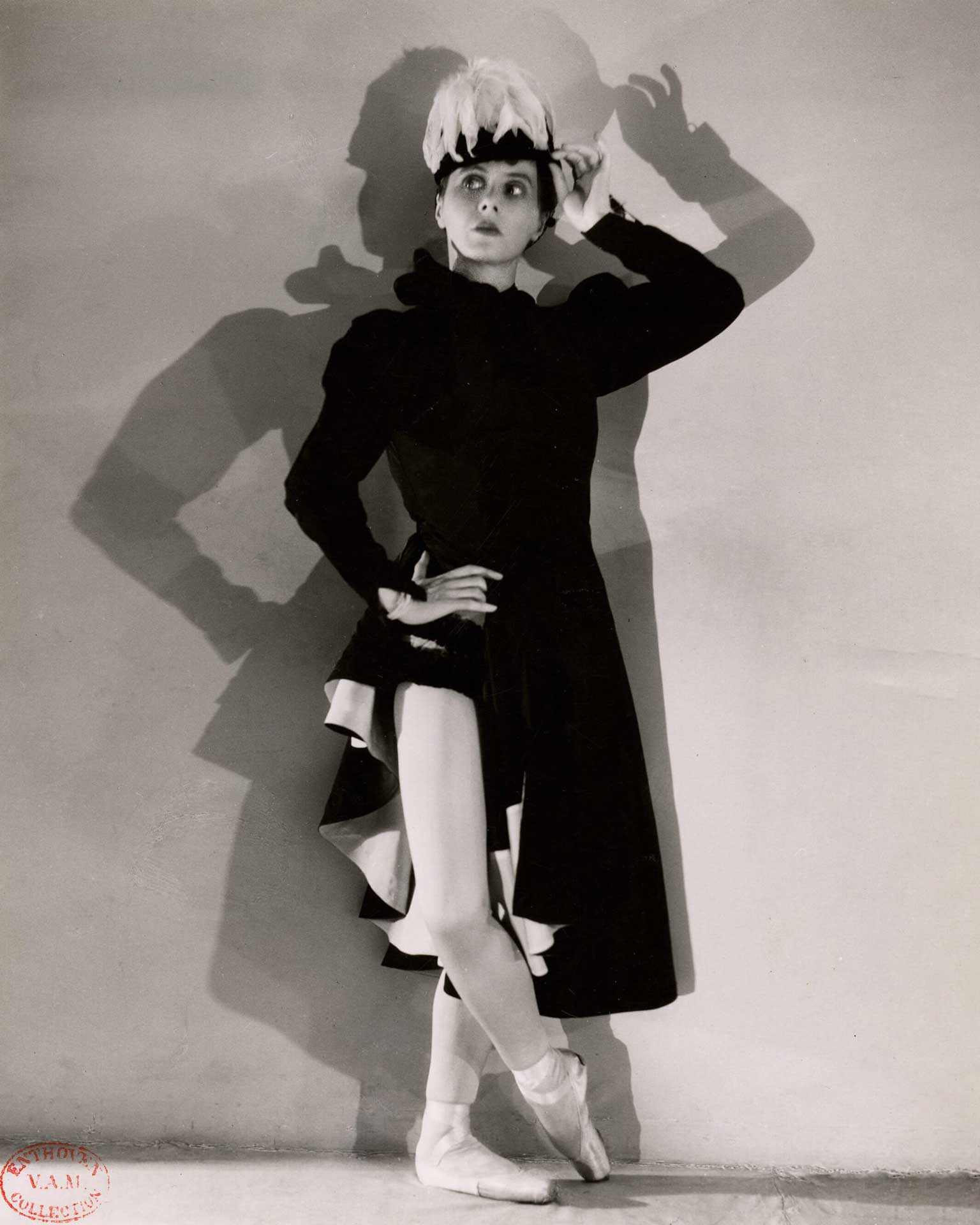people » Ninette de Valois
Ninette de Valois (1898-2001). Irish dancer, choreographer and founding director of The Royal Ballet
Ninette de Valois was born Edris Stannus in Blessington, Ireland. Her father was a British army officer and her mother the granddaughter of Elizabeth Smith, the well-known diarist. For her first seven years she lived in Baltyboys House, a large family mansion on her mother’s side, until she and her parents had to move to England for financial reasons. De Valois was deeply affected by the move, and always regretted it.
At the age of ten she started taking ballet lessons, and at 13 began professional training with the Lila Field Academy for Children. It was around this time that she changed her name, first to Nina de Valois, and then Ninette de Valois, and began dancing professionally. These appearances included pantomime in London, and dancing in various venues, including seaside piers around the country. In 1918 and 1919 she became principal dancer for the Beecham Opera at Covent Garden and began taking lessons with Edouard Espinosa, Enrico Cecchetti and Nicholas Legat.
She joined Serge Diaghilev’s Ballets Russes in 1923, where de Valois remained for three years, during which time she created roles in works by Bronislava Nijinska. Having left Diaghilev, from whom she said she had learned everything she knew about running a ballet company, in 1926 she established the Academy for Choreographic Art in London. De Valois based her teaching methods on what she had learned from the French, Italian and Russian influences of her own training, which would become integral in the establishment of a national dance identity in Britain. Also, at the instigation of WB Yeats, de Valois set up the Abbey Theatre School of Ballet in Dublin where she performed in some of Yeats’ plays. She established a connection with Lilian Baylis at the Old Vic in London where her pupils were able to perform in plays and operas, much of the choreography being supplied by de Valois herself. In 1931 de Valois moved her fledgling company and school to Sadler’s Wells Theatre, which had been acquired by Baylis. They danced at both the Old Vic and Sadler’s Wells, and became known as the Vic-Wells Ballet. In these early years of directing, de Valois continued dancing herself (until 1933), and was also prolific as a choreographer.
The Vic-Wells Ballet flourished in the 1930s, not least because of its dancers, Alicia Markova, Anton Dolin and Lydia Lopokova, who were stars from Diaghilev’s Ballets Russes, and later Margot Fonteyn, Robert Helpmann and Pamela May. De Valois’ engagement of Constant Lambert as musical director and Frederick Ashton as choreographer was crucial to the company’s success and development. Despite creating several major ballets in the 1930s (The Rake’s Progress, Job, and Checkmate), de Valois drew back from choreography at the end of that decade. During the war years, the Sadler’s Wells Ballet, as they were now known, toured extensively, and in 1940 became famously stranded in Holland for a few days as the Germans advanced.
This war work did much to establish de Valois’ company as a national institution, and when the Royal Opera House re-opened in 1946, it was with the Sadler’s Wells Ballet performing The Sleeping Beauty in a legendary performance led by Fonteyn. De Valois’ company was thus established at the Royal Opera House, and began touring in Europe and, from 1949, in the United States of America. A second company, known initially as the Sadler’s Wells Theatre Ballet was formed in 1946, mainly for touring. In 1956, both companies and school received a royal charter, becoming The Royal Ballet, The Royal Ballet Touring Company and The Royal Ballet School.
De Valois remained director of The Royal Ballet until 1963 but continued to be highly influential in the affairs of both company and school well into her nineties. She is, of course, distinguished as the founder of The Royal Ballet and the guiding spirit behind it and its achievements well into the 1960s, and indeed behind ballet itself in Britain for several decades. She also helped establish a school and company in Turkey (from 1947). As well as dancing, teaching, choreographing, directing and organising ballet, she wrote and published a number of books and some fine poetry. She was honoured in Britain with a CBE in 1947, a DBE in 1951, a Companion of Honour in 1981, and an Order of Merit in 1992, as well as in many other countries, including France, Turkey and Ireland. She died in 2001, forceful and coherent right up until the time of her death.

